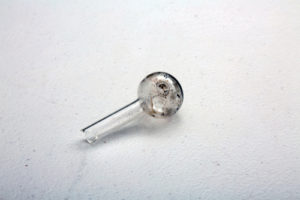They say curiosity killed the cat. However, it seems as though this adage went unheeded as many people reportedly began using methamphetamine (meth) out of curiosity. But it’s not the only reason people try this dangerous illicit substance. People site, peer pressure, depression, other internal issues as the catalyst that leads them to meth use. Meth was once used as a legal weight loss drug and it’s still used for that purpose in other countries. Some people still try to use illicit meth for its weight loss effects. However, most people use it in search of its powerful high. Many people come to it after using other drugs, in the hopes that it will deliver the next euphoric experience.
Once someone tries meth for whatever reason, the energy, euphoria, and rush the drug produces becomes intoxicating. Before long, meth can become a person’s only source of pleasure, without the person even realizing the serious addictive potential.
Recently, AMC’s hit television show, Breaking Bad, may have skewed the portrayal of the meth industry in its depiction of a “noble” high school chemistry teacher who simply wanted to provide for his family, “super labs,” and charismatic business people. However, one thing it did do was inspire a conversation about the seriousness of meth addiction and the world that surrounds it.
But how is meth addictive? What are the meth addiction symptoms?
In light of the rapidly growing burden of illicit meth-related physical, psychological, and social harms, here is a look at meth abuse, its associated signs, and symptoms, and how to seek help for treatment.
What is Meth?
Methamphetamine, or meth, is a highly addictive stimulant drug within the amphetamine class. It affects the central nervous system and is primarily used as a recreational drug and less commonly as a second-line treatment for medical conditions like Attention-deficit/ hyperactivity disorder (ADHD) and obesity. The white, bitter-tasting crystalline powder can be formed into a pill or rock (crystal) and easily dissolved in water or alcohol.
According to a 2014 National Survey on Drug Abuse and Health, 4.9 percent of Americans 12 years old and older disclosed using meth in their lifetime. A2015 survey reported most of the meth used in the U.S. is produced and distributed illegally. The data show that more than 1.7 million people 12 and older reported illicit meth use in 2015.
The process of making meth is generally referred to on the street as “cooking.” Producers of illicit meth synthesize the drug with chemicals like ephedrine or pseudoephedrine found in over-the-counter cold, cough, and allergy medicines. Additional chemicals found in cheap household items are used to isolate the ephedrine or pseudoephedrine, cook it into meth, and process it into a form for consumption. Cooking meth produces toxic, flammable fumes and may result in chemical explosions.
Unfortunately, meth addicts who are seemingly far gone and lack the funds to support their addictions often offer their homes as potential meth labs. These homes are almost always inhospitable after use as a result of the plethora of toxic chemicals that were released during the “cooking” process.

The US National Library of Medicine has explained, “Meth, at first, causes a rush of good feelings, but then users feel edgy, overly excited, angry, or afraid.”
Meth actually destroys the nerve terminals in the brain where dopamine is released thus causing behavioral changes and dependence. Although the brain damage can naturally reverse itself when the addict stops using, it can take months to repair the damage, leaving the former users with intense psychological withdrawals.
People have reported that the alarming effects of abusing meth have lasted from four to 12 hours, which is a significant amount of time compared to other substances.
Immediate Side Effects Of Meth
- Anxiety
- Anger
- Confusion
- Chest pain
- Decreased appetite
- Flushed or itchy skin
- Hallucinations and paranoia
- Irregular heartbeat
- Increased breathing rate
Long-Term Side Effects Of Meth
While meth can cause several uncomfortable, acute side effects, it can also cause you to experience chronic health issues after months or years of misuse. The long-term side effects of meth can be serious, causing potentially life-threatening diseases that require medical treatment. Some of the long-term effects of meth abuse can include:
- Meth addiction
- Brain disease
- Damage to blood vessels
- Heart disease
- Premature aging
- Lung disease
- Unhealthy weight loss
- Depression and suicide
- Death
- “Meth Mouth”-Severe tooth disease and gum decay
The US Drug Enforcement Agency (DEA) classifies meth as a Schedule II controlled substance, the second-highest classification that also includes cocaine and morphine.
Street names for meth include Speed, Chalk, Crank, Ice, Glass, Tina, and Crystal.
What Is a Meth Comedown?
A meth comedown refers to the period of time between your initial dose of meth and when the effects of the drug wear off. The euphoric meth high can wear off after a few minutes, leaving you with uncomfortable side effects. Side effects of meth like anxiety, insomnia, agitation, and irritability can last for a few hours as your body processes the drug out of your system.
As the drug wears off, you will start to experience the crash, which is when you stop feeling the stimulating effects of the drug and start to feel fatigue, depression, and lethargy. People who are chemically dependent on meth may experience a worse crash as withdrawal symptoms begin. Withdrawal can cause hypersomnia, severe fatigue, depression, suicidal thoughts, and anhedonia, which is the inability to feel pleasure.
How Long Does Meth Stay In Your System?
Meth has a half-life of about 10 hours, which means it will take your body that long to reduce it to half of its original concentration in your bloodstream. By the time you reach the 10-hour mark, most of the drug’s effects will have stopped. However, the euphoric effects of meth don’t last for ten hours. The effects of the drug will likely change over time as it enters your body and is processed. Still, you may feel stimulating effects like high energy, alertness, and sleeplessness for several hours after taking meth.
After 10 hours, you may feel tired, and your mood may be lowered. But even though you aren’t feeling stimulating effects anymore, the drug is still in your system. Meth may be found in a blood test for around 24 hours. It may be found in a urine test for up to a week. It’s unlikely that you will need to take a hair follicle test, but if you do, meth can be detected this way for up to 90 days.
What Is a Meth Binge?
Since meth causes such a brief euphoric high followed by uncomfortable side effects, many people take several doses of meth in a row. This is called a meth binge, which is done to prolong the high while staving off the side effects. However, a meth binge increases your risk of experiencing serious side effects or an overdose. People who binge meth often experience insomnia, sometimes for several nights. Stimulant use that is combined with several days of sleeplessness can cause stimulant-induced psychosis, which can involve frightening hallucinations.
Sleep and Meth Use
Even people who use meth for medical reasons may experience a disruption of their normal sleep cycle due to its stimulant effects.
People who binge on the drug for extended periods will often not be able to sleep for one or more days at a time while they are under the effects of the drug.
When the individual stops using the drug, the neurotransmitters affected by its mechanism of action are depleted, and they may then begin to experience drowsiness and lethargy.
They may “crash” by sleeping for significant periods. However, the effects of the drug may affect the quality of the individual’s sleep.
Effects of Meth on Sleep Quality
When used in medicinal doses for the treatment of narcolepsy, methamphetamine appears to allow these individuals to achieve relatively normal periods of rapid eye movement (REM) sleep.
People who abuse the drug experience decreased quality of sleep and decreased REM sleep. They may also experience very vivid and disturbing dreams when they sleep.
Those who abuse the drug may experience irregular sleep patterns. Many chronic users of meth exhibit sleep patterns that are similar to their pattern of drug abuse. They go for extended periods without sleeping while under the influence of the drug and then go through short periods where they may sleep for a long time, but the quality of their sleep is usually significantly reduced.
Meth may produce paradoxical sleep deficiency syndrome (reduced REM sleep).
“Significant reductions in REM sleep are associated with a higher propensity to develop other mental health disorders. Lack of REM sleep may also increase the propensity for other issues, including irritability and restlessness, and it may lead to cognitive problems that can include issues with learning and memory.”
Why is Meth So Addictive?
Methamphetamine is powerful, even compared to other stimulants like cocaine and crack. Both cocaine and meth work on the dopamine receptors in the brain, which are responsible for a wide variety of functions. However, dopamine also makes you feel really good and explains the euphoric effects of the drugs that bind to those receptors. It also affects your reward center and it may be a signal to tell your brain that the task you are doing is good and should be repeated.
Cocaine attaches to the dopamine receptors and blocks the reuptake of dopamine. This means that it stops your nervous system from removing and recycling dopamine when it is no longer needed. This results in more dopamine chemicals binding to more receptors, causing cocaine’s high.
Meth does the same thing. It blocks the reuptake of dopamine and causes an intense high, the major difference is that it also causes an increase in the release of dopamine. This causes the chemical to flood your nervous system and the dopamine receptors, causing an intense high. A meth high is powerful but doesn’t last long. Like crack, people will sometimes spend long periods of time on binges.
Each hit causes an intense dopamine release and then immediately subsides. The short-lived euphoria causes the user to desperately seek to continue the high. However, your brain can only release so much dopamine at once, so each high is weaker than the last. These binges can increase your likelihood of overdose, developing chemical dependence, and developing psychotic symptoms.

Prolonged use or extremely heavy doses of meth can cause damage to your dopamine receptors. By repeatedly flooding your brain with dopamine, many of your receptors will be damaged to the point where they are no longer functional. This may lead to a condition called anhedonia, which is when you can’t feel pleasure from any natural sources like food, hobbies, and friends. In many cases, meth becomes the only way for people to feel any pleasure at all, so they continue to use it. While it is treatable, it takes a long time to recover from anhedonia caused by meth use.
What are the Signs of Meth Addiction?
Meth is powerfully addictive and can start to cause the development of a substance use disorder after just a few uses. If you have used meth or if you are worried about a loved one you suspect is using meth, there are a few telltale signs that you might be able to notice. If possible, catching and addressing a meth addiction can minimize consequences and lead to lasting healing. If a person is addicted to meth for longer, there is still hope of recovery but the process will have taken a greater toll on their life.
If you have used meth and you are worried you might be developing dependence, the first sign is usually a feeling of growing tolerance. If you notice that the same dose of meth is less powerful than it was before, it can mean that you are becoming more tolerant. Meth causes an intense dopamine release that floods the system and causes its powerful high. However, an immediate second hit will be weaker because your brain can only release so much dopamine at once. However, if you use meth on separate occasions and notice a weaker potency, it could point to growing tolerance.
The next sign of a growing addiction is dependence or a feeling that you need meth to feel normal and it’s no longer just about recreation. If you go for too long without a dose, you might feel symptoms like depression or lethargy. As your dependence becomes full-blown addiction, the problem will no longer be a chemical imbalance in your brain’s messaging system, it will also move to your reward and learning center. Addiction is a deep-seated issue that is not easily overcome. To you, it will feel like strong compulsions to use meth, even when you know it will have serious consequences.
People who are struggling with meth addiction are often unable to quit on their own because of the way the substance reprograms the brain’s reward system and impairs crucial decision-making processes. Drug abuse is sometimes difficult to spot in another person when it first begins but addiction will ultimately lead to other aspects of your life and be difficult to hide.
If a loved one is using meth, there might be some physical or behavioral signs and symptoms that make a substance use disorder apparent. Here are some of the most prevalent signs of meth abuse that may help you save a loved one’s life:
Signs Of Meth Abuse
- Aggression
- Paranoia
- Dilated pupils
- Strange sleep patterns
- Withdrawal from normal activities
- Unexplained weight loss
- Lying about activities
- Hyperactivity
- Increased distractibility
- Loss of consciousness
- Tooth decay and loss of teeth
- Skin picking, sores on the skin
- Talkativeness
- Psychosis
What is Involved in Meth Addiction Treatment?
While fighting your debilitating meth addiction may seem unimaginable at the time, recovery is possible. Addiction is a chronic disease with a high risk for relapse. However, as with other diseases like asthma, diabetes, and hypertension, addiction is treatable. With evidence-based treatment methods and an emphasis on personalized care, addiction can be overcome, leading to lifelong sobriety.
The National Institute on Drug Abuse has cited behavioral therapies, such as cognitive-behavioral and contingency-management interventions to be the most effective treatments for meth addiction. Behavioral therapies are useful in treating a wide variety of addictions, co-occurring mental health issues, and other underlying problems. Their versatility causes them to be ideal for tailoring treatment to individual needs.

The first and one of the most important steps in meth addiction treatment is medical detox. The medical detoxification stage is closely monitored by doctors and nurses who, depending on the severity of the addiction, may administer doses of medications to ease the uncomfortable symptoms of withdrawal. Medical detox is also useful in treating other medical and psychological needs, whether or not they are directly related to your addiction.
Being the first step in addiction recovery, the detox stage of treatment will often dictate the outcome of full treatment. Because of this, it is highly recommended that you or a loved one seek a medical detoxification program with an experienced, licensed, and reputable team of medical personnel.
Once your body has rid itself of the drug’s chemical through detox, you can continue your recovery through residential or intensive outpatient treatment. Again, addiction is a deeply seeded disease and it will take more than just detox to address. Behavioral therapies are often used in treatment, including cognitive behavioral therapy to help you modify your behavior and retrain your brain’s response to cravings and triggers. Addressing underlying issues is important in achieving long-lasting recovery.
Helping a Loved One
When trying to help a loved one in their meth addiction treatment, you must provide the necessary support they need. One thing you can do to help a loved one is to avoid playing the “blame game.” Try to steer clear of things like “Well ___ wouldn’t have happened if you would’ve just done ___” and anything that might make the patient feel attacked.
As someone very close to the patient, your job is to make them feel stronger and confident in their recovery process. One method we found to be exceptionally useful is by using more personal pronouns such as “we”, “ours”, “us”, and other words that include both you and the patient. This provides a much-needed comfortable, safe environment at home for the patient until they seek professional treatment.
If your friend or loved one is in an outpatient program, maybe visiting a treatment center a few times a week, there are many things you can do to help them continue their treatment. Letting them know how proud you are that they are putting forth so much effort can easily be the difference between recovery and relapse.
How Dangerous is Meth?
Meth is one of the most addictive substances in the United States—people have reported becoming addicted to this drug in as little as one use.
“Taking large amounts of meth can lead to overheating, seizures, loss of consciousness, or coma since the use of the substance leads to a rise in blood pressure and heart rate. As such, overdose can be fatal if the user doesn’t receive immediate medical attention.”
Furthermore, an August 2017 report published in the Journal of Neurology, Neurosurgery, and Psychiatry, linked the use of meth to a heightened risk of hemorrhagic stroke in young people below the age of 45.
Pregnant women must be aware of the risks of meth abuse. Not only could they be susceptible to increased rates of premature delivery and placental abruption, but unborn babies prenatally exposed to meth could be born small in size, lethargic, and have heart and brain abnormalities.
Meth Abuse Statistics
- An estimated 1 in 5 meth labs is discovered as a result of explosions caused by the extremely flammable solvents used in the process of making the drug.
- In 2012, there were approximately 440,000 people regularly using meth in the United States.
- Meth has been a billion-dollar industry for several years including an estimated $13 billion in 2010, down from $23 billion in 2005.

